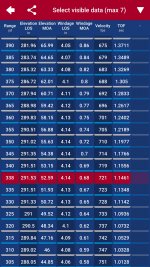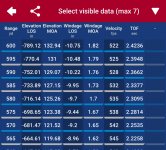Looking for some advice of barrels and bullets and chambers. Rifle is a 22lr Marlin 880 SS... click pen trigger spring, DIP 25moa scope rail, SWFA 10x mil/mil when I can find one... looking to hit 300m with the setup, eventually.
You need not worry yourselves about the specifics of the actual barrel change process. But, let's talk about barrels...
It looks like Bartein's standard 22rf offering is a 16tw with 4, 5, or 6 grooves... 222 in the groove, and a 217 bore. If I am reading their website correctly, non-standard twist rates, such as 1:10", costs an extra $20. Not sure if the 5R rifling is available for rimfires, but it looks like that costs $100, if it is available in this bore/groove combination.
Lilja, on the other hand, offers a 1:9" twist "tight" barrel with 3 grooves... 220 in the groove, and a 215 bore.
Both the Bartein and Lilja start at about $370 for a stainless steel blank, and the extra options costs on the Bartein are not in any way a deal breaker.
The Bartein 10tw would be finished at 16.5", allowing for one and a half complete revolutions of rifling ahead of the chamber. This is about the minimum amount of twists I prefer, and also the shortest barrel that is legal without a stamp. The shorter barrel may not be best for my 300m goals, but keeps the rifle maneuverable. It will mainly be a target rifle, though, so maneuverability isn't a huge concern.
The 9tw Lilja would be finished at 19.5", allowing for two complete revolutions of rifling ahead of the chamber. The faster twist rate keeps the overall length under 20", and two or more complete turns of rifling is where I like to be. This length is closer to what the rifle came with, and may (or may not) offer more potential for reaching 300m.
Is there honestly going to be much of a difference between these two choices? Will the extra 3" and half a revolution of rifling give the Lilja a real advantage? I doubt there is any real difference between the 9tw and 10tw rifling, but does the number of grooves matter?
I plan on mainly shooting the 60gr subsonic loads, but ~40gr high velocity is definitely not out of the question. What chamber should I use? Bolt gun repeater, and I would like to not have to worry about extracting live rounds. Still want a match chamber, that doesn't jam the bullets into the rifling...
From what I have seen, there is the Bentz semi auto chamber, the EPS chamber, and a PTG LR Match chamber... these are "match" chambers that supposedly allow one to extract live rounds without too much trouble. Which, if any, will work best with the 60gr subsonic loads?
You need not worry yourselves about the specifics of the actual barrel change process. But, let's talk about barrels...
It looks like Bartein's standard 22rf offering is a 16tw with 4, 5, or 6 grooves... 222 in the groove, and a 217 bore. If I am reading their website correctly, non-standard twist rates, such as 1:10", costs an extra $20. Not sure if the 5R rifling is available for rimfires, but it looks like that costs $100, if it is available in this bore/groove combination.
Lilja, on the other hand, offers a 1:9" twist "tight" barrel with 3 grooves... 220 in the groove, and a 215 bore.
Both the Bartein and Lilja start at about $370 for a stainless steel blank, and the extra options costs on the Bartein are not in any way a deal breaker.
The Bartein 10tw would be finished at 16.5", allowing for one and a half complete revolutions of rifling ahead of the chamber. This is about the minimum amount of twists I prefer, and also the shortest barrel that is legal without a stamp. The shorter barrel may not be best for my 300m goals, but keeps the rifle maneuverable. It will mainly be a target rifle, though, so maneuverability isn't a huge concern.
The 9tw Lilja would be finished at 19.5", allowing for two complete revolutions of rifling ahead of the chamber. The faster twist rate keeps the overall length under 20", and two or more complete turns of rifling is where I like to be. This length is closer to what the rifle came with, and may (or may not) offer more potential for reaching 300m.
Is there honestly going to be much of a difference between these two choices? Will the extra 3" and half a revolution of rifling give the Lilja a real advantage? I doubt there is any real difference between the 9tw and 10tw rifling, but does the number of grooves matter?
I plan on mainly shooting the 60gr subsonic loads, but ~40gr high velocity is definitely not out of the question. What chamber should I use? Bolt gun repeater, and I would like to not have to worry about extracting live rounds. Still want a match chamber, that doesn't jam the bullets into the rifling...
From what I have seen, there is the Bentz semi auto chamber, the EPS chamber, and a PTG LR Match chamber... these are "match" chambers that supposedly allow one to extract live rounds without too much trouble. Which, if any, will work best with the 60gr subsonic loads?





